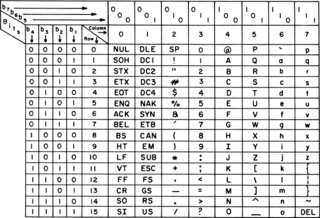
Gnumeric is a spreadsheet program that is part of the GNOME Free Software Desktop Project. Gnumeric version 1.0 was released on 31 December 2001. Gnumeric is distributed as free software under the GNU GPL license; it is intended to replace other spreadsheet programs such as Microsoft Excel (proprietary). Gnumeric was created and developed by Miguel de Icaza, but he has since moved on to other projects. The maintainer as of 2002 was Jody Goldberg.

In computing, a visual programming language (VPL) is any programming language that lets users create programs by manipulating program elements graphically rather than by specifying them textually. A VPL allows programming with visual expressions, spatial arrangements of text and graphic symbols, used either as elements of syntax or secondary notation. For example, many VPLs are based on the idea of "boxes and arrows", where boxes or other screen objects are treated as entities, connected by arrows, lines or arcs which represent relations.

JMP is a suite of computer programs for statistical analysis developed by the JMP business unit of SAS Institute. It was launched in 1989 to take advantage of the graphical user interface introduced by the Macintosh. It has since been significantly rewritten and made available for the Windows operating system. JMP is used in applications such as Six Sigma, quality control, and engineering, design of experiments, as well as for research in science, engineering, and social sciences.

Genstat is a statistical software package with data analysis capabilities, particularly in the field of agriculture.
Design Web Format (DWF) is a secure file format developed by Autodesk for the efficient distribution and communication of rich design data to anyone who needs to view, review, or print design files. Because DWF files are highly compressed, they are smaller and faster to transmit than design files, without the overhead associated with complex CAD drawings. With DWF functionality, publishers of design data can limit the specific design data and plot styles to only what they want recipients to see and can publish multisheet drawing sets from multiple AutoCAD drawings in a single DWF file. They can also publish 3D models from most Autodesk design applications.

MedCalc is a statistical software package designed for the biomedical sciences. It has an integrated spreadsheet for data input and can import files in several formats.

Epi Info is statistical software for epidemiology developed by Centers for Disease Control and Prevention (CDC) in Atlanta, Georgia (US).

Origin is a proprietary computer program for interactive scientific graphing and data analysis. It is produced by OriginLab Corporation, and runs on Microsoft Windows. It has inspired several platform-independent open-source clones like SciDAVis.
MapInfo Pro is a desktop geographic information system (GIS) software product produced by Pitney Bowes Software and used for mapping and location analysis. MapInfo Pro allows users to visualize, analyze, edit, interpret, understand and output data to reveal relationships, patterns, and trends. MapInfo Pro allows users to explore spatial data within a dataset, symbolize features, and create maps.

FlexPro is a software package for analysis and presentation of scientific and technical data, produced by Weisang GmbH. It runs on Microsoft Windows and is available in English, German, Japanese, Chinese and French. FlexPro has its roots in the test and measurement domain and supports different binary file formats of data acquisition instruments and software. In particular, FlexPro can analyze large amounts of data with high sampling rates.

SigmaStat is a statistical software package, which was originally developed by Jandel Scientific Software in the 1980s. As of October 1996, Systat Software is now based in San Jose, California. SigmaStat users have the ability to compare effects among groups. This includes before and after or repeated measure studies. The users can also conduct survival analysis, analyze rates and proportions, perform regression and correlation analysis and calculate power and sample size. The program uses a wizard based interface which asks the user questions about the project and its data. After a test is run, the user receives a detailed report that interprets the results.

SigmaPlot is a proprietary software package for scientific graphing and data analysis. It runs on Microsoft Windows.
PSPP is a free software application for analysis of sampled data, intended as a free alternative for IBM SPSS Statistics. It has a graphical user interface and conventional command-line interface. It is written in C and uses GNU Scientific Library for its mathematical routines. The name has "no official acronymic expansion".
StatView is a statistics application originally released for Apple Macintosh computers in 1985.
GraphPad Software Inc. is a privately held California corporation. They publish scientific software, including:
Design–Expert is a statistical software package from Stat-Ease Inc. that is specifically dedicated to performing design of experiments (DOE). Design–Expert offers comparative tests, screening, characterization, optimization, robust parameter design, mixture designs and combined designs. Design–Expert provides test matrices for screening up to 50 factors. Statistical significance of these factors is established with analysis of variance (ANOVA). Graphical tools help identify the impact of each factor on the desired outcomes and reveal abnormalities in the data.
StatCrunch is a Web-based statistical software application from Pearson Education. StatCrunch was originally created for use in college statistics courses. As a full-featured statistics package, it is now also used for research and for other statistical analysis purposes.











